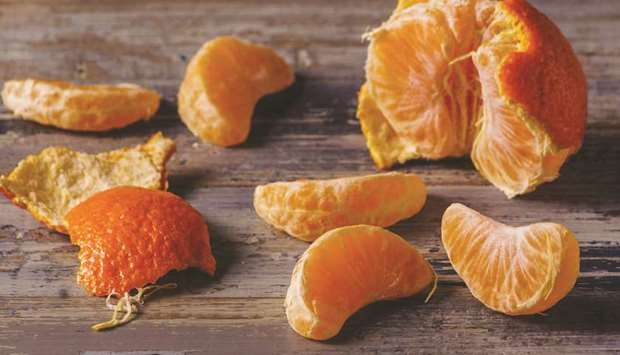QUESTION: I (and maybe many others) have usually pulled off many of the strings that are on the segments of tangerines and clementines and discarded them. I do this because they occasionally get stuck between my teeth, but probably more so because of aesthetics. I now am wondering whether I have been discarding valuable ‘fibre’ or should I be mainly concerned with ‘soluble fibre’? I don’t think I am the only one that wonders about this nutritional habit.” - John
A: Yes, John, I do believe those strings of pith that get stuck in your teeth when you eat tangerines and clementines (citrus fruits similar to mandarin oranges) contain valuable dietary fibre. By definition, dietary fibre is an indigestible carbohydrate that comes in many forms but has two basic classifications, soluble and insoluble. Although our bodies do not derive calories (energy) from eating this part of plant foods, researchers are finding more and more health benefits of eating a diet high in fibre.
Various types of soluble fibres, for example, may help our bodies eliminate excess cholesterol. Soluble fibre also feeds good bacteria in our guts which, among other benefits, may improve our immune function and lower our risk for certain diseases. According to the USDA Food Composition database, one medium tangerine contain about 2 grams of dietary fibres including soluble and insoluble types. And that’s good because experts tell us we should be concerned with getting all types of dietary fibres by eating a variety of fruits, vegetables and other plant foods. So if you can figure out how to get those strings out of your teeth, eating them may indeed be healthful.
Q: I was interested in reading your article about quinoa. I had tried quinoa last year as an ingredient in a recipe with a few veggies (healthy, right?) but I didn’t have any of the reactions that (your reader) mentioned. But the quinoa acted as a laxative for me. Had you ever heard of that? I am not allergic to apples or wheat, and I did not get a rash. Any good explanation?” - Jeanette K.
A: Yes, Jeanne, I have heard of that. One explanation may be that quinoa is considered a whole grain and is thus a good source of dietary fibre, the insoluble type in particular. Insoluble fibre adds bulk to the stool which keeps things moving through the digestive tract. Best bet when adding more high fibre foods to your diet: Do it slowly and drink more fluids. - Tribune News Service

Tangerines and clementines are a good source of fibre, especially with strings attached.
